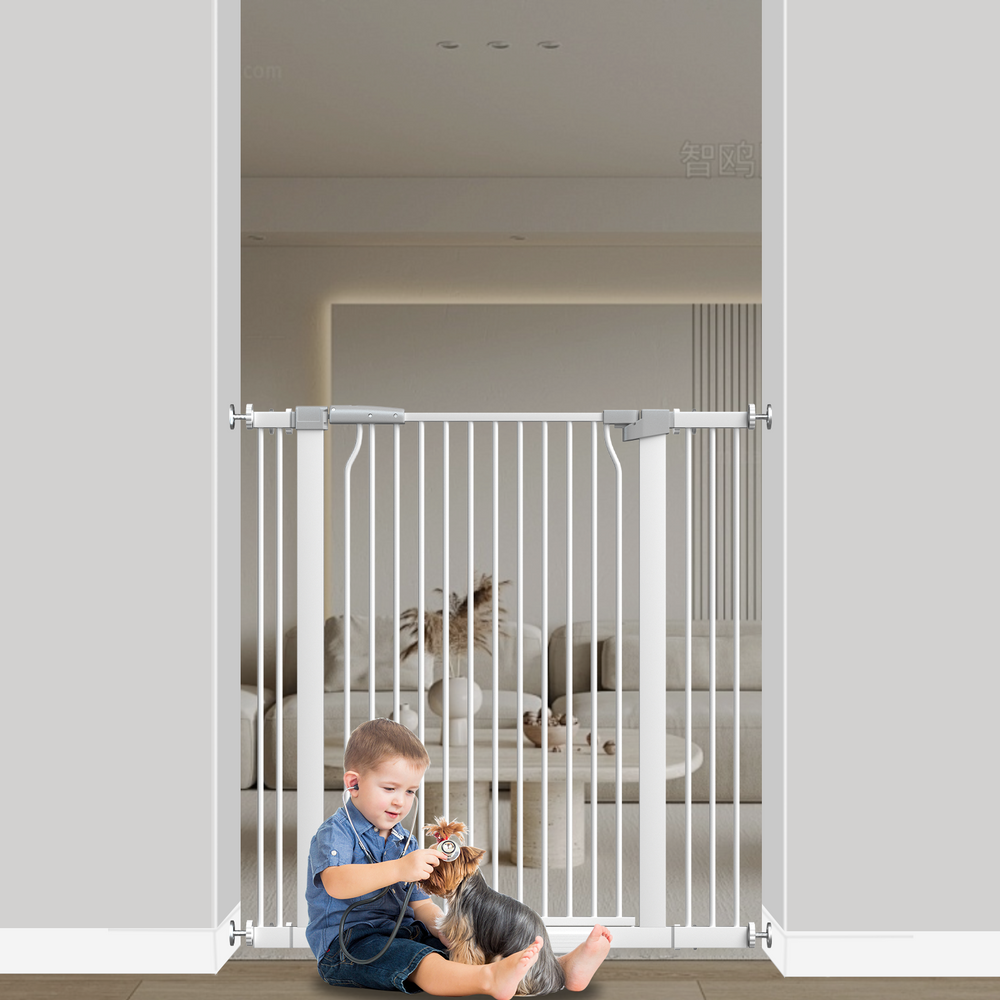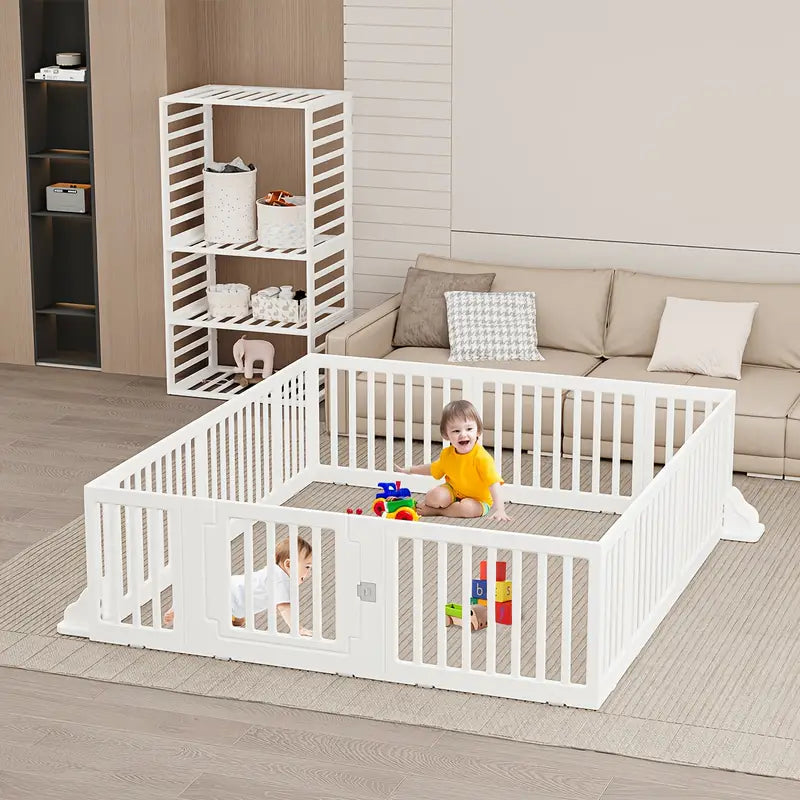Essential Guide to Baby-Proofing Electrical Outlets for a Safer Home
Understand The Risks Associated With Electrical Outlets
Before we get into how to baby-proof, let's talk about why it's so important. I mean, we all know electricity is dangerous, but it's easy to get complacent, especially when you're dealing with a million other things as a parent. So, let's break down the specific risks that electrical outlets pose to babies and toddlers.
Common Injuries From Electrical Outlets
Okay, so what can actually happen? Well, the big one is electrical shock, obviously. Babies and toddlers are curious, and they explore the world by touching and, yes, sometimes sticking things into places they shouldn't. An electrical outlet is just the right size for little fingers or small objects, and that can lead to a painful – and potentially deadly – shock. Burns are another risk, both from the electrical current itself and from any fire that might start as a result. And, sadly, in some cases, these incidents can be fatal. It's scary stuff, but knowing the risks is the first step in preventing them.
Statistics On Electrical Accidents
Numbers can be pretty impactful, so let's look at some stats. According to the Electrical Safety Foundation International (ESFI), thousands of children are injured each year due to electrical hazards in the home. While not all of these are specifically from outlets, a significant portion are. It's also worth noting that these numbers likely don't capture every incident, as many minor shocks or burns might go unreported. Here's a simplified look at some potential data:
| Type of Injury | Estimated Annual Cases |
|---|---|
| Electrical Shock | 1,000 - 2,000 |
| Burns | 500 - 1,000 |
| More Severe Cases | 100 - 300 |
These numbers highlight the importance of taking electrical safety seriously, especially when you have young children in the house. It's not just about preventing a minor owie; it's about protecting them from serious harm.
Why Baby-Proofing Electrical Outlets Is Essential
So, we know the risks, we've seen the stats... why is baby-proofing electrical outlets so essential? Because babies and toddlers don't understand danger. They don't know that sticking a fork into an outlet is a bad idea. It's our job as parents and caregivers to create a safe environment for them. Baby-proofing isn't about bubble-wrapping your entire house; it's about identifying potential hazards and taking steps to minimize those risks. And when it comes to electricity, that means making sure those outlets are inaccessible to little hands. It's a simple step that can make a huge difference. It's also important to consider tamper-resistant receptacles for added safety. Here's a quick list of why it's so important:
- Prevents electrical shock and burns.
- Reduces the risk of fire.
- Provides peace of mind for parents.
Install Tamper-Resistant Receptacles
Benefits Of Tamper-Resistant Receptacles
Okay, so you're thinking about upping your outlet game? Good move! Tamper-resistant receptacles (TRRs) are a simple but effective way to prevent electrical shocks, especially for curious kids. They have spring-loaded shutters inside that block access unless two prongs of a plug are inserted at the same time. This makes it way harder for kids to stick things in there. Think of it as a built-in safety feature that works all the time, without you having to remember to do anything. It's a small investment for a lot of peace of mind. Plus, many newer homes are required to have them installed anyway, so you might already have them!
How To Install TRRs Safely
Alright, so you're ready to swap out those old outlets for TRRs? Here's the deal: if you're not comfortable working with electricity, seriously, call an electrician. But if you're the DIY type, here's a quick rundown:
- Turn off the power at the breaker. Seriously, double-check.
- Remove the old outlet cover and unscrew the outlet from the wall.
- Disconnect the wires. Make a note of which wire goes where!
- Connect the wires to the new TRR, matching the connections.
- Screw the TRR back into the box and attach the cover.
- Turn the power back on and test it.
Remember, safety first! If anything feels off, stop and call a pro. Messing with electricity can be dangerous, so don't take any chances. It's better to be safe than sorry, especially when it comes to protecting your family. You can find tamper resistant outlets at most hardware stores.
Where To Find Tamper-Resistant Outlets
Finding tamper-resistant receptacles is pretty easy these days. Most hardware stores carry them, and you can also find them online. You'll usually see them right next to the regular outlets. They might cost a little more, but it's worth it for the added safety. You can also ask your local electrician; they can usually supply and install them for you. Here's a quick comparison of where you might find them:
| Retailer | Pros | Cons |
|---|---|---|
| Hardware Stores | Convenient, can see them in person | Might have limited selection |
| Online Retailers | Wide selection, often cheaper | Can't see them before buying, shipping time |
| Electricians | Professional install, expert advice | More expensive |
Consider checking out online retailers for a wide selection of outlet plugs.
Use Outlet Covers And Plugs
Okay, so you've decided to take the plunge and really baby-proof those outlets. Good move! There are a couple of ways to go about it, and honestly, it depends on your budget, how handy you are, and how determined your little one is to explore. Let's break down the options.
Types Of Outlet Covers Available
There's a surprising variety of outlet covers out there. It's not just those simple plastic caps anymore (though those are still an option!). Here's a quick rundown:
- Standard Outlet Plugs: These are the basic plastic caps you stick into unused outlets. They're cheap and easy to install, but determined kids can sometimes pull them out. They're best for outlets that aren't used often.
- Sliding Outlet Covers: These replace your existing outlet plate. They have a spring-loaded cover that slides shut when the outlet isn't in use. To use the outlet, you slide the cover to the side. These are a bit more secure than plugs.
- Box Outlet Covers: These are larger covers that encase the entire outlet, even when something is plugged in. They're great for outlets that are frequently used, like for lamps or TVs. They prevent kids from messing with the plugs or cords.
Choosing The Right Outlet Plug
Choosing the right outlet plug really depends on your specific needs and situation. Here's what I would consider:
- Frequency of Use: If it's an outlet you use all the time, a box cover is probably the way to go. If it's rarely used, a simple plug might be enough.
- Child's Dexterity: Some kids are more persistent than others. If you've got a particularly curious and coordinated toddler, you'll need something more secure.
- Aesthetics: Let's be real, some outlet covers are just plain ugly. If you care about how things look, there are more stylish options available. Look for tamper-resistant receptacles TRR benefits that blend in better.
- Budget: Prices vary quite a bit, so consider how many outlets you need to cover and what you're willing to spend.
Installation Tips For Outlet Covers
Most outlet covers are pretty easy to install, but here are a few tips to keep in mind:
- Turn off the power: Before installing any type of outlet cover that involves removing the existing plate, turn off the power at the breaker. Seriously, don't skip this step.
- Read the instructions: I know, nobody likes reading instructions, but it's worth it to make sure you're installing the cover correctly. Especially for box covers, which can be a bit more complicated.
- Test the cover: Once you've installed the cover, make sure it's working properly. For sliding covers, make sure it slides smoothly. For box covers, make sure it closes securely. Check for any signs of suspicious activity.
Don't just slap on some outlet covers and call it a day. Take the time to choose the right type of cover for each outlet, install them properly, and regularly check to make sure they're still working. It's a small investment of time and effort that can make a big difference in your child's safety.
Keep Electrical Cords Out Of Reach

Kids are curious, and electrical cords can be tempting targets. It's not just about electrical shock; pulling on a cord can bring an appliance crashing down. Here's how to keep those cords out of reach and your little ones safe.
Best Practices For Cord Management
- Shorten the length: Use shorter cords whenever possible. If you have excess cord length, try to bundle it up.
- Unplug when not in use: This is a good habit in general, but especially important with kids around. It eliminates the risk entirely.
- Inspect cords regularly: Look for any signs of damage, like fraying or exposed wires. Damaged cords are a hazard and should be replaced immediately.
Using Cord Organizers Effectively
Cord organizers are your friend! There are tons of options out there, from simple cable ties to more elaborate cord management solutions. Here are a few ideas:
- Cable ties: These are cheap and easy to use. Just bundle up the excess cord and secure it with a tie.
- Cord concealers: These are great for hiding cords along baseboards or walls. They keep cords out of sight and out of mind.
- Cord boxes: These are boxes that you can put power strips and cords inside. They keep everything neat and tidy, and prevent kids from messing with the cords.
Avoiding Tripping Hazards With Cords
Tripping over cords is a common cause of household accidents. Here's how to minimize the risk:
- Keep cords out of walkways: Run cords along walls or under furniture, where people aren't likely to trip over them.
- Use cord covers: These are rubber or plastic strips that you can place over cords to protect them and make them more visible.
- Secure loose cords: Use tape or cable clips to secure loose cords to the floor or wall.
Keeping cords out of reach is a simple but effective way to baby-proof your home. It's all about thinking ahead and taking a few extra steps to create a safer environment for your little ones. It's worth the effort for the peace of mind it brings.
Educate Your Children About Electrical Safety

It's easy to overlook, but teaching kids about electricity is super important. They need to understand that it's not something to mess around with. We want them to be safe and aware of the dangers. It's not just about keeping them away from outlets; it's about giving them the knowledge to make smart choices around electricity for the rest of their lives. Let's get into how to do that.
Teaching Kids About Electrical Dangers
Start simple. Explain that electricity powers our lights and TVs, but it can also hurt us. Use age-appropriate language to describe what electricity does and why it's dangerous to touch exposed wires or stick things into outlets. Show them pictures of damaged cords or appliances as examples of what can happen when things go wrong. Make it clear that electricity is not a toy.
Creating Safety Rules For Home
Establish clear rules and stick to them. Here are a few ideas:
- Never touch outlets or cords with wet hands.
- Don't put anything other than plugs into outlets.
- Tell an adult if you see a damaged cord or outlet.
- Stay away from power lines outside.
Make sure everyone in the house knows these rules and understands why they're important. Post them somewhere visible as a reminder. Regular reminders help reinforce the message. It's also a good idea to explain the consequences of breaking these rules. For example, "If you touch an outlet with wet hands, you could get a shock."
Using Visual Aids To Explain Risks
Pictures and videos can be really helpful for showing kids the dangers of electricity. There are lots of resources online that demonstrate what happens when electricity is misused. You can also use everyday objects to illustrate concepts. For example, show them how water conducts electricity by demonstrating how a wet sponge makes a light bulb flicker. Just be sure to do it safely and under supervision. You can also use safety gates effectively to block access to dangerous areas.
It's important to have these conversations early and often. Don't assume that your kids understand the risks just because you've told them once. Keep reinforcing the message and answering their questions. The more they know, the safer they'll be. Also, consider using tamper-resistant receptacles for added safety.
Regularly Inspect Electrical Outlets
Okay, so you've got your outlet covers installed and maybe even some tamper-resistant receptacles. Great! But baby-proofing isn't a one-and-done thing. You need to keep an eye on those outlets regularly. Things can get loose, damaged, or just plain worn out over time. Here's what to look for:
Signs Of Wear And Tear
- Cracks or chips: Obvious physical damage is a red flag. If you see any cracks or pieces missing from the outlet itself, it's time to take action.
- Loose Outlets: If a plug feels loose when you insert it, or if the entire outlet wiggles in the wall, that's not good. Loose outlets can be a fire hazard.
- Discoloration: Any discoloration around the outlet could indicate overheating. This is a serious sign and needs immediate attention.
When To Replace Outlets
- If you see any of the wear and tear signs mentioned above, replace the outlet ASAP. Don't wait!
- If an outlet sparks or smokes, even once, replace it. Seriously, don't risk it.
- If you're not comfortable doing it yourself, call a qualified electrician. It's better to be safe than sorry. It's important to maintain electrical safety at home.
Importance Of Professional Inspections
While you can do your own visual checks, it's a good idea to have a professional electrician inspect your home's electrical system periodically. They can spot potential problems that you might miss. Think of it like taking your car in for a tune-up – it's preventative maintenance that can save you from bigger headaches down the road.
Regular inspections are key to maintaining a safe home. Don't underestimate the importance of checking your outlets and electrical system. It's a small effort that can make a big difference in protecting your family.
Create A Safe Environment Around Outlets
Furniture Placement To Block Access
Okay, so you've got your tamper-resistant receptacles TRRs and outlet covers, but let's think about the bigger picture. Sometimes, the simplest solution is just to make it physically harder for your little one to get to those outlets in the first place. Think about rearranging your furniture. Can you put a bookshelf or a sturdy chair in front of that tempting outlet behind the couch? It's not foolproof, but it adds another layer of protection.
Using Safety Gates Effectively
Safety gates aren't just for stairs! They can be super useful for blocking off entire areas where you have a lot of outlets, like maybe a home office or a playroom corner. Make sure the gate is securely installed and that your child can't climb over or under it. We had to upgrade ours when Lily figured out how to shake the old one loose. It's all about staying one step ahead, right?
Establishing Outlet-Free Zones
Think about creating areas in your home that are completely free of accessible outlets. Maybe it's a corner of the living room or a section of their bedroom. This gives you a space where you know they can play without you constantly hovering. It's also a good idea to keep electrical devices away from water sources. I know it sounds obvious, but it's easy to forget when you're juggling a million things.
Creating outlet-free zones can significantly reduce the risk of electrical accidents. By designating specific areas where outlets are inaccessible, parents can provide a safer play environment for their children. This approach complements other safety measures, such as outlet covers and tamper-resistant receptacles, to create a comprehensive safety strategy.
Wrapping It Up: Keeping Your Home Safe
In the end, baby-proofing your electrical outlets is a must for any home with little ones running around. It might seem like a hassle, but trust me, it’s worth it. By using tamper-resistant outlets, covers, and keeping cords out of reach, you’re taking big steps to keep your kids safe. Plus, teaching them about electrical safety as they grow can make a huge difference. So, take a little time to make these changes. Your peace of mind will thank you, and your kids will be safer for it.






Leave a comment